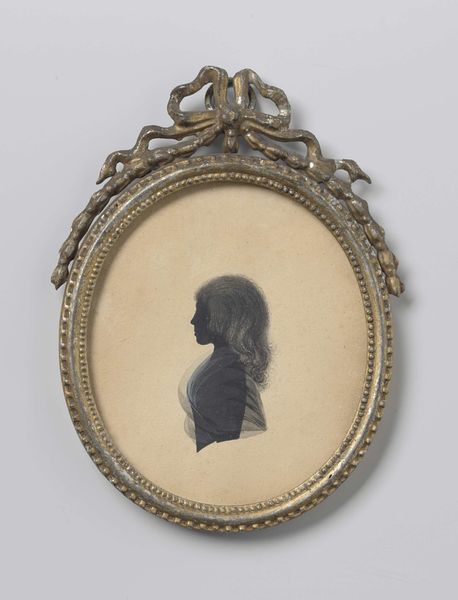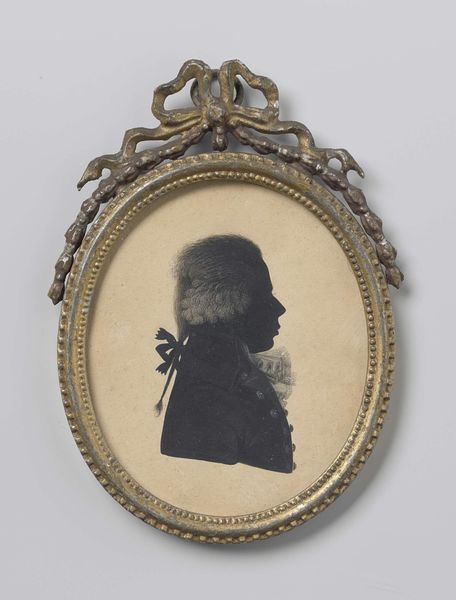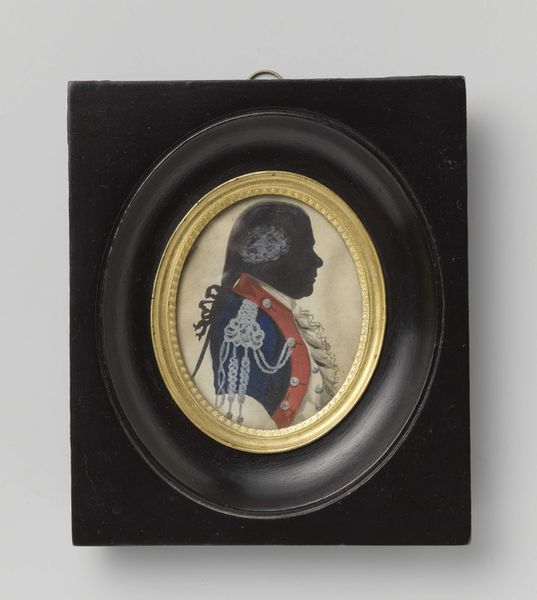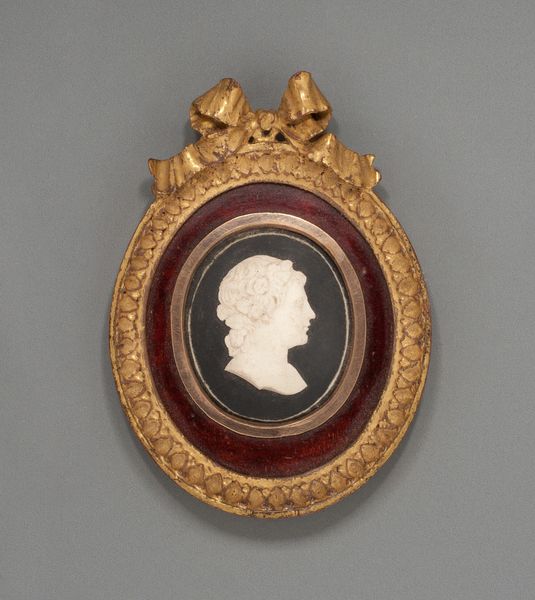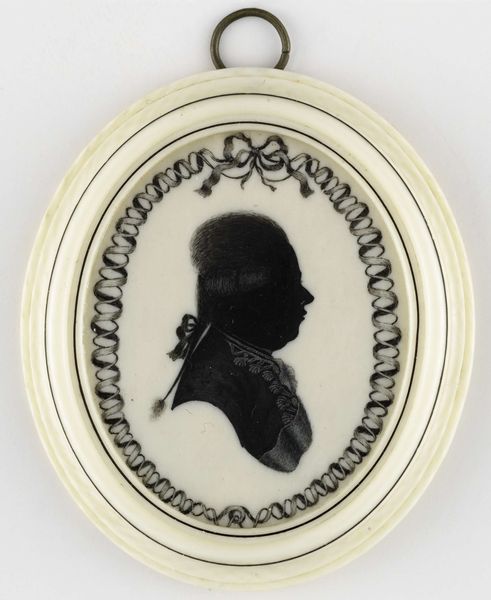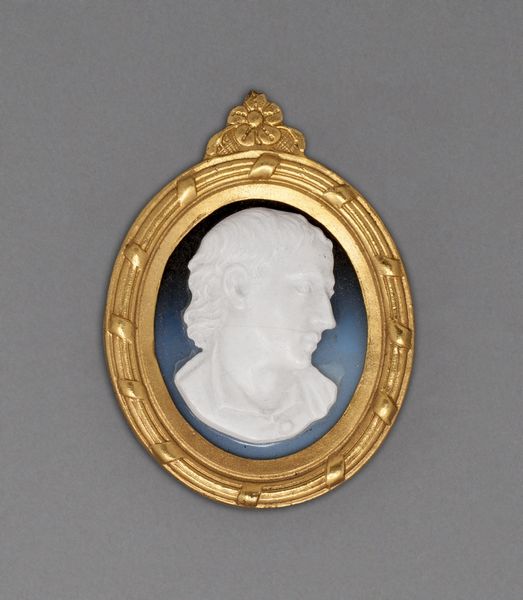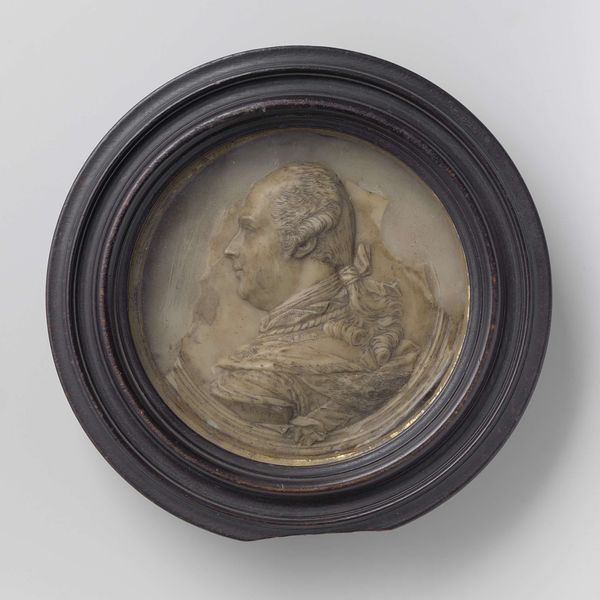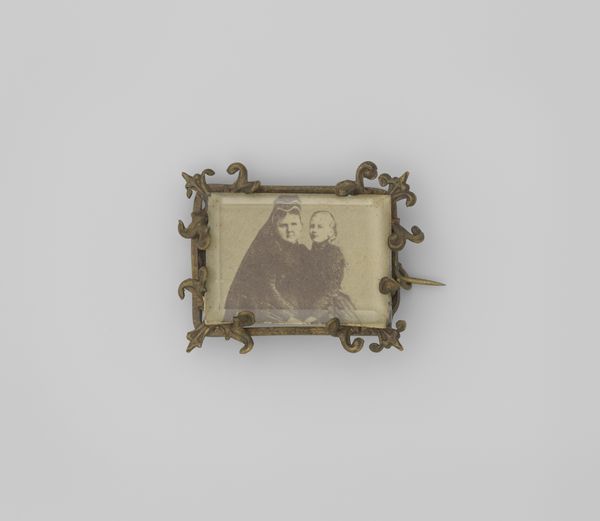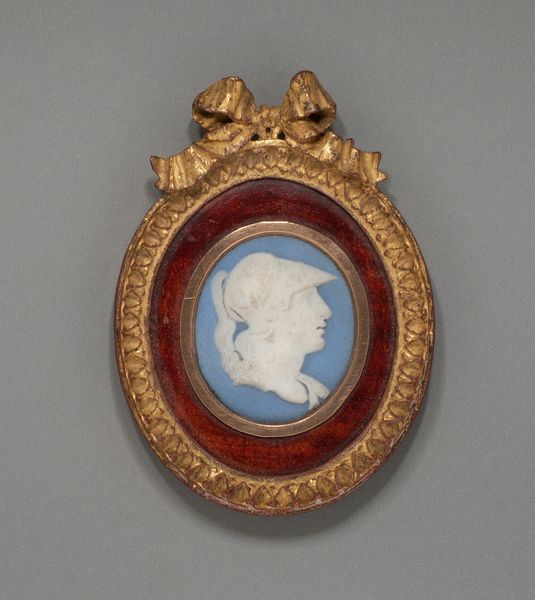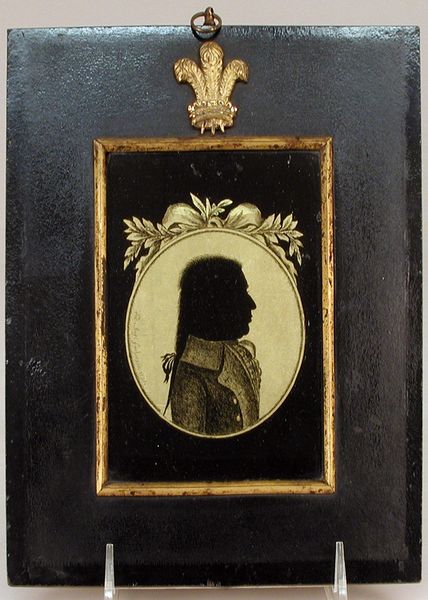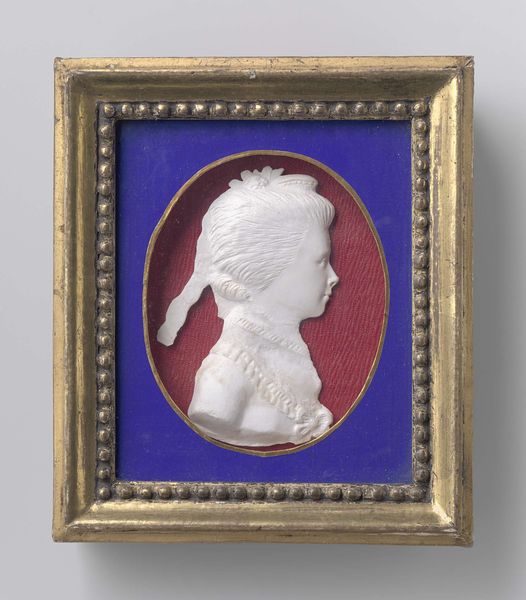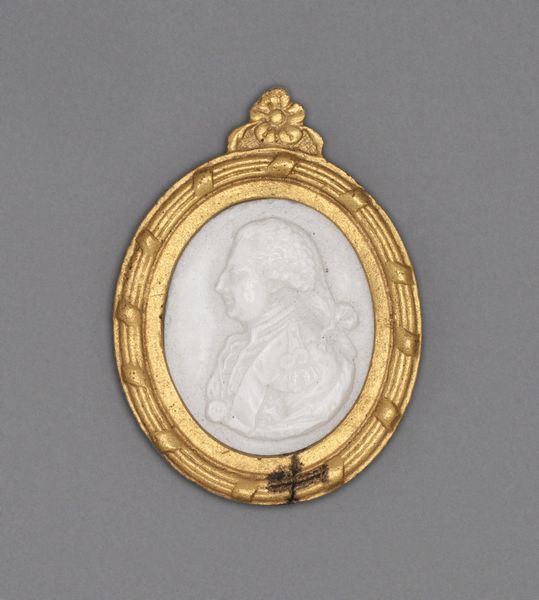
Silhouet portret van Arthur Wellesley, Duke of Wellington (1769-1852) c. 1815
0:00
0:00
drawing, paper, pencil
#
portrait
#
drawing
#
sculpture
#
paper
#
romanticism
#
pencil
#
line
Dimensions: height 11 cm, width 9.9 cm, depth 1.5 cm
Copyright: Rijks Museum: Open Domain
Curator: Here we have a silhouette portrait, tentatively dated around 1815. It depicts Arthur Wellesley, the Duke of Wellington. The artwork employs pencil on paper and comes to us courtesy of the Rijksmuseum collection. Editor: It strikes me immediately as remarkably severe, yet quite delicate. The crispness of the silhouette against that ground paper is both elegant and austere. The figure appears almost defiant, contained entirely by its borders and in such starkness. Curator: Indeed. The line work provides us with a concise summary of Wellington, distilling his public image. One might observe the almost aggressive set of the jaw. What visual strategies denote status and character so succinctly. Editor: And in its time, this would have circulated as a popular representation, shaping public perception through reproduction. What sort of political message did that stark simplification carry? The contrast reminds one that it served during the romantic era, which makes me see an emphasis on line rather than depth, idealizing a singular, simplified subject through visual representation. Curator: That observation certainly underscores the dual function of line—both delineating form and projecting ideology. Moreover, one cannot ignore the very materiality of its presence. How does paper as a delicate surface contribute to the reading of vulnerability or temporality? The form's lack of complexity serves to amplify its message of unwavering commitment to Great Britain. Editor: But also how such a common format creates more widespread access to his image as a historical figure. While he looks stalwart in that strong line work, the intimacy of the format is intriguing and perhaps reveals that artwork as more personal than what the message intends to be. Curator: Quite the consideration. Focusing on the stark black form of the figure provides a valuable case study. Editor: Agreed. Considering the intersection of history, representation, and material adds new complexity to it.
Comments
No comments
Be the first to comment and join the conversation on the ultimate creative platform.
